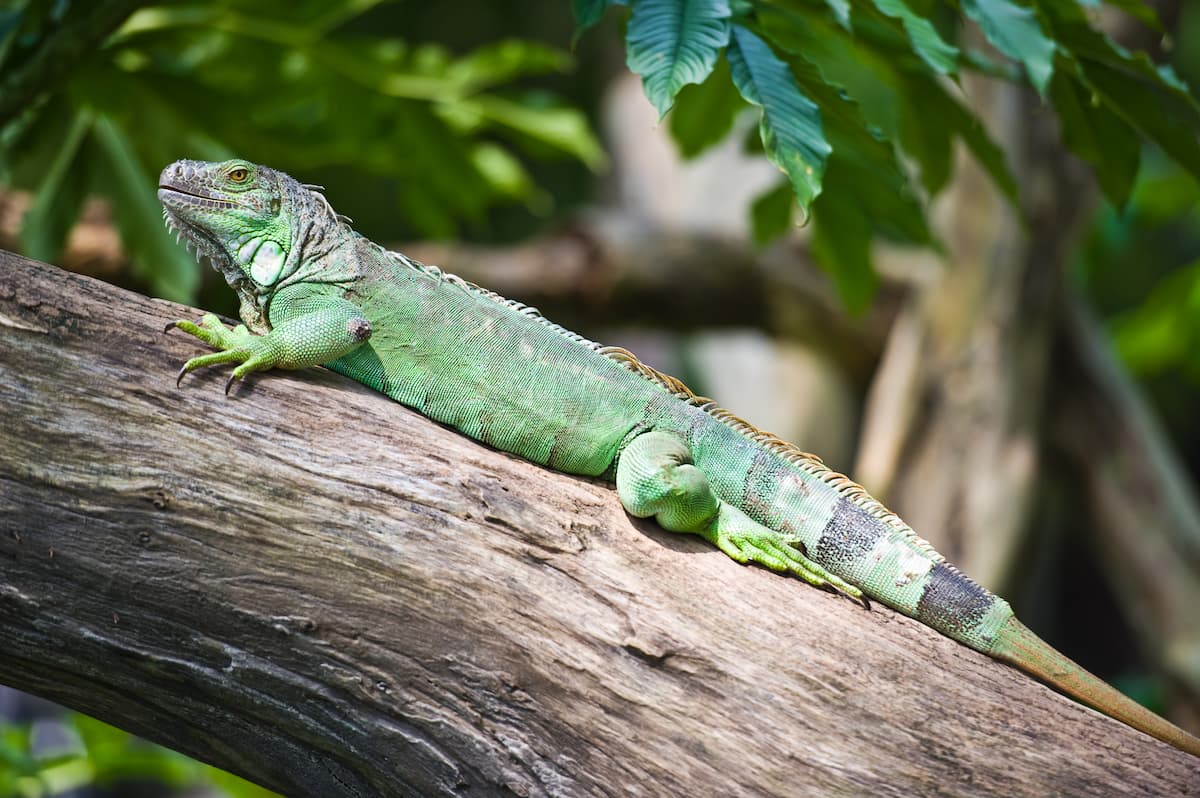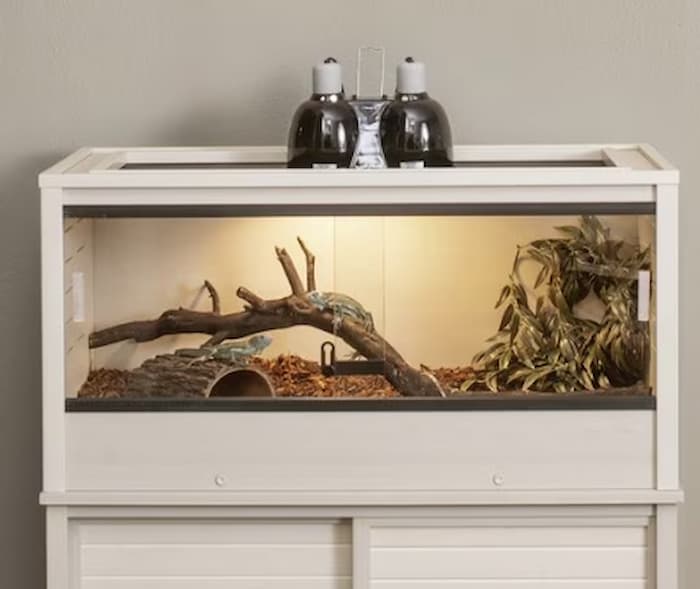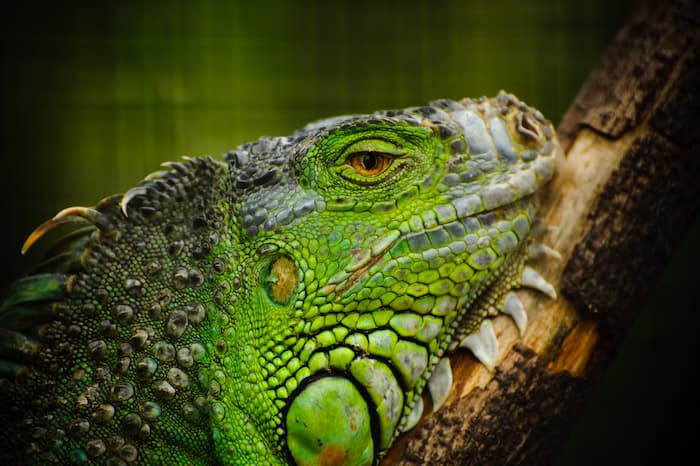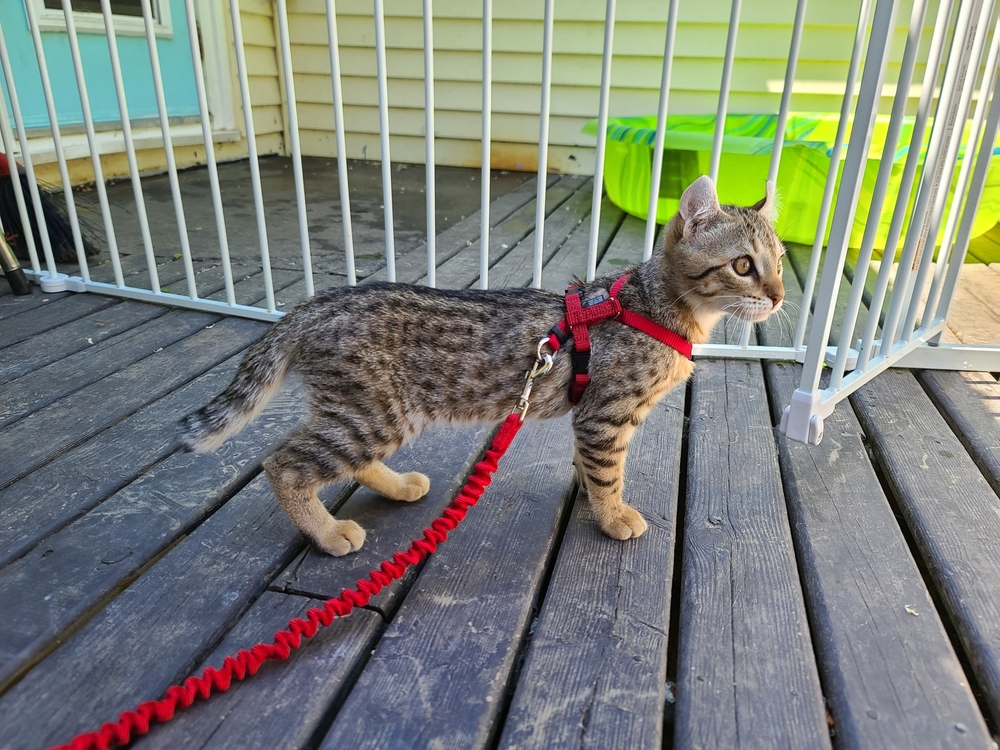Top 10 Fun Facts About Iguanas
Updated on February 14, 2024

We discovered a lot of fun facts about iguanas. Commonly kept as house pets, green iguanas are large, tree-climbing lizards native to the Caribbean and Central and South America.
They are also found in the wild as feral populations in Florida, Hawaii, Texas, and the U.S. Virgin Islands. These reptiles can make great pets when kept under the proper environmental conditions and fed appropriately. Especially for families with older, perhaps even teenaged children who can be taught to handle the reptiles appropriately or for individuals who want a long-lived companion.
Fun Facts About Iguanas
What should you know if you are considering an iguana as a pet? Here are ten fun facts about iguanas.
All featured products are chosen at the discretion of the author. However, Vetstreet may make a small affiliate commission if you click through and make a purchase.
1. They’re long-bodied and long-lived lizards.
Iguanas are very large lizards that can live 20 or more years in captivity and can grow as long as six feet, nose to tail tip. More than half of their body length is due to their tail. Adult males can weigh up to nine pounds, with some especially large ones reaching as much as 18 pounds, while smaller females may grow up to seven pounds.
So, first thing to know if you’re thinking of having an iguana is that you need to plan on having a very large tank or enclosure, in which the animal can stretch out and turn around. While small iguanas can be housed in aquariums, as they age, they generally outgrow the tanks and must be housed in a penned-off area or small room where the temperature, humidity and ultraviolet (UV) light exposure can be controlled. An iguana enclosure should be at least twice as long as the iguana and should be a minimum of six feet high, as they like to climb.
One iguana enclosure option for consideration is the New Age Pet ECOFLEX Mojave Reptile Lounge. It features front sliding glass doors with a large mesh screen top. These features enable pet parents to access the lounge habitat’s interior easily. It’s worth checking out because it is moisture-resistant, won’t retain odor, and is easy to clean. Bonus: Choose from different sizes and colors to accommodate your scaly pal.

2. They like it hot and sticky.
Iguanas like to have a basking zone that is around 90 degrees Fahrenheit and should have a cooler zone that doesn’t fall below the mid-70s. Generally, depending on the size of the tank or enclosure, a combination of ceramic bulbs that provide heat, or mercury vapor bulbs that provide both heat and UV light, are used to maintain the temperature within this ideal range.
“Point and shoot” temperature guns or simple stick-on thermometers that adhere to the wall should be used. A reptile-savvy veterinarian can provide an iguana owner with advice about enclosure set up appropriate for the size of the iguana and how to anticipate future needs. Iguanas are ectotherms, meaning their body temperatures are determined by their environmental temperatures. When their surrounding temperatures drop too low, their body temperatures drop, their immune systems don’t function optimally and their metabolisms slow, making them more susceptible to infection.
They also need adequate humidity (a minimum of 60 to 70 percent) to stay hydrated, as they absorb water through their skin. While all iguanas should be provided with a shallow water dish from which to drink, they also should be misted or soaked in a shallow pan of water several times a week, especially in dry climates, to help ensure they don’t get dehydrated.
ReptiZoo offers a combination pack of daylight and nightlight heat lamps. Boasting an operation life of 2000 to 3000 hours, pet parents can rely on longevity with these lights.

3. They’re sun worshippers.
Like many other reptiles, iguanas need UV light to make vitamin D in their skin, which then enables them to absorb calcium from their food. The UV light cannot be filtered by glass, such as through a window, but must shine directly onto the animal. Indoor UV bulbs should be changed every six months, as the UV spectrum burns out, even though the light may still shine.
Iguanas housed indoors without UV light will develop metabolic bone disease in which they extract calcium from their skeleton, leading to soft bones that fold and break under pressure. Metabolic bone disease is ultimately fatal but can be treated if diagnosed early. For this reason, all iguanas should be examined by a veterinarian when they are first obtained and at least annually after that to help ensure they are healthy.

4. They shed skin.
As they grow, iguanas will shed their skin and will continue to do so throughout life, with young animals shedding several times each year and older ones shedding sometimes only once a year. When they shed, their skin becomes opaque, their skin color becomes duller, and they typically sit still with their eyes closed and their bodies puffed up to help loosen the shedding skin.
They will often rub their bodies against objects in their cage to scratch off patches of shedding skin. Soaking them in a shallow pan of warm water and misting them while they are shedding can help pieces of dry retained skin shed more easily. Shedding can take several days, depending on the humidity level of the animal’s enclosure and whether the pet has rocks or other objects on which to rub.
5. They’re cray-zee about veggies.
Iguanas are herbivores, eating predominantly vegetables and fruit in the wild with an occasional insect, snail or bird’s egg. Pet iguanas should be fed a vegetable-based diet with minimal animal protein, as long-term animal protein consumption may have harmful effects on the kidneys. Iguanas should be fed a variety of dark leafy greens including collard, mustard, turnip and dandelion greens; romaine lettuce; and kale.
Other vegetables, such as green beans, snap peas, carrots, squash and peppers, should be in their diet, along with lesser amounts of fruit, such as mango, papaya, apples, banana and berries. A varied vegetarian diet is critical to maintain the proper balance of calcium to phosphorus, which is essential to iguanas’ health.

6. Their tails come off!
In the wild, iguanas can break off their tails to escape if a predator grabs the tail and holds on. Pet iguanas can release their tails if they are restrained by the tail, or if the tail gets caught and they can’t move. Occasionally, pet iguanas will lose their tails if they whip them against a hard surface or if they are stepped on. Iguanas’ special muscular attachments to the tail vertebrae enable them to break off the tail between vertebrae.
If the tail breaks off cleanly, it may grow back, especially if the iguana is young, healthy and still growing. The new tail is typically smoother, narrower and darker than the original tail. Older iguanas on poor diets with traumatic tail breaks not between vertebrae often do not regrow their tails. If an iguana suffers from a tail break, a veterinarian should examine the iguana as soon as possible to see whether surgical or medical treatment is required.

7. They have an extra eye.
Not only do iguanas have great vision and see colors, as well as UV light, sharply, but they also have an unusual photosensory organ on top of their heads called the pineal gland, or parietal eye. This structure has some anatomical features of a normal eye and is sensitive to light changes, as well as to movement. This “third eye” cannot form images but helps wild iguanas detect predators lurking above them. This extra eye is present in several other lizard species, as well as in some fish.
8. They talk to each other.
Although they don’t actually use verbal language to communicate, iguanas talk to each other through head bobbing and through movement of the flap of skin under their necks — called a dewlap. Iguanas will extend their dewlaps to say hello to each other or as a sign of being territorial.
Male iguanas will extend their dewlaps when courting females. Iguanas bob their heads slowly up and down at each other to acknowledge each other’s presence. Faster head bobbing, either up and down or side to side, is a sign that the iguana is upset or feeling aggressive. Rapid back-and-forth head bobbing is usually an indication that the iguana is extremely upset and should be left alone. Finally, iguanas whip their tails to protect themselves when they feel threatened. Thus, while iguanas do not “speak,” they certainly communicate.
9. They recognize their owners by sight and sound.
Many people unfamiliar with iguanas don’t realize it, but pet iguanas absolutely recognize their owners by sight and sound. Iguanas have very keen vision and clearly see their owners and recognize them. Iguanas also hear well.
While an iguana has no external ear, as we do, it does have a clearly visible eardrum (or tympanic membrane) on both sides of its head, continuous with the skin surface. They hear sounds in a different frequency range from that heard by humans, but they clearly discern familiar voices and other noise. While they may not come when they’re called like a dog, they definitely respond to their caretakers.

10. They carry salmonella bacteria.
All reptiles potentially carry salmonella bacteria in their gastrointestinal tracts, and generally these bacteria do not harm them in any way. When the bacteria pass into the lizard’s stool, however, the stool becomes a potential source of infection for people and pets who may come into contact with it and may put their contaminated hands in their mouths.
Salmonella can cause serious gastrointestinal upset, blood infection and even death in people (especially infants and the elderly) with compromised immune systems. Therefore, all individuals must wash their hands after touching an iguana or its cage accessories and bedding. An iguana’s stool should be cleaned up soon after it is passed, so that it doesn’t dry up and become aerosolized, carrying the bacteria with it. Iguanas that carry salmonella don’t shed it into their stool every time they defecate; thus, culturing individual stool samples for salmonella is an unreliable method of testing for it.
All iguanas should be assumed to carry these bacteria, and, therefore, families with small children who won’t reliably wash their hands should not have an iguana.
Iguanas are fairly complicated lizards to care for, but when maintained properly, these amazing reptiles can make wonderful companions for 15 to 20 years or more. If you are considering an iguana as a pet, speak to a reptile-savvy veterinarian before you rush out and get one to be sure that an iguana is right for you.
Pet Health Insurance Can Help
Unexpected veterinary bills can make caring for your pet challenging. Don’t let financial stress get in the way of making the best decisions for your pet. Pet health insurance can cover surprise costs such as veterinary visits, prescription medications, and life-saving procedures.
Review personalized options for your pet below:
More on Vetstreet:






